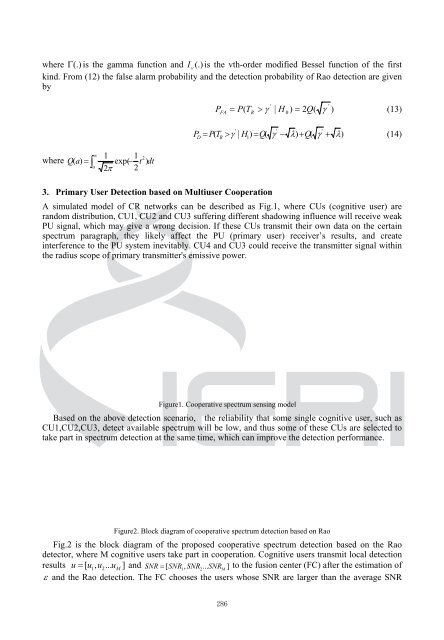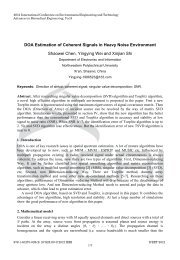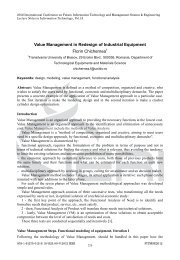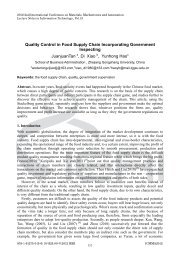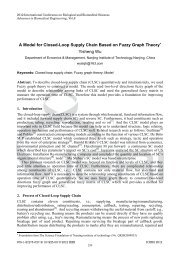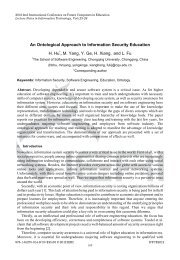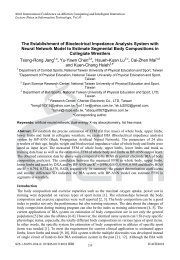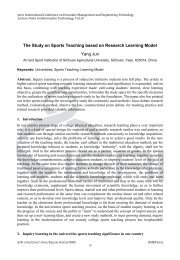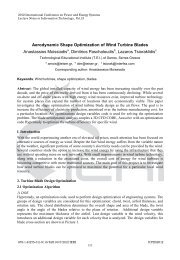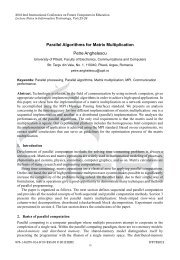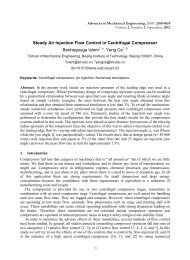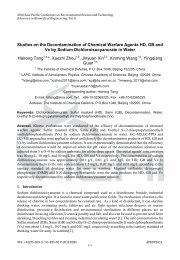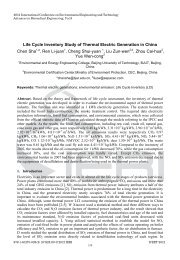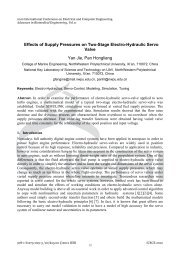A Cooperative Spectrum Detection Technique in Non-Gaussian ...
A Cooperative Spectrum Detection Technique in Non-Gaussian ...
A Cooperative Spectrum Detection Technique in Non-Gaussian ...
You also want an ePaper? Increase the reach of your titles
YUMPU automatically turns print PDFs into web optimized ePapers that Google loves.
where Γ(.)<br />
is the gamma function and I<br />
v<br />
(.) is the vth-order modified Bessel function of the first<br />
k<strong>in</strong>d. From (12) the false alarm probability and the detection probability of Rao detection are given<br />
by<br />
where Q a ∫ ∞ 1 1 2<br />
( ) = exp( − t ) dt<br />
a<br />
2π<br />
2<br />
P<br />
'<br />
'<br />
= P(<br />
T > γ | H ) 2Q(<br />
γ )<br />
(13)<br />
FA R<br />
0<br />
=<br />
3. Primary User <strong>Detection</strong> based on Multiuser Cooperation<br />
'<br />
'<br />
'<br />
PD = P(<br />
TR<br />
> γ | H ) = Q(<br />
γ − λ)<br />
+ Q(<br />
γ + λ)<br />
(14)<br />
A simulated model of CR networks can be described as Fig.1, where CUs (cognitive user) are<br />
random distribution, CU1, CU2 and CU3 suffer<strong>in</strong>g different shadow<strong>in</strong>g <strong>in</strong>fluence will receive weak<br />
PU signal, which may give a wrong decision. If these CUs transmit their own data on the certa<strong>in</strong><br />
spectrum paragraph, they likely affect the PU (primary user) receiver’s results, and create<br />
<strong>in</strong>terference to the PU system <strong>in</strong>evitably. CU4 and CU3 could receive the transmitter signal with<strong>in</strong><br />
the radius scope of primary transmitter's emissive power.<br />
1<br />
Figure1. <strong>Cooperative</strong> spectrum sens<strong>in</strong>g model<br />
Based on the above detection scenario, the reliability that some s<strong>in</strong>gle cognitive user, such as<br />
CU1,CU2,CU3, detect available spectrum will be low, and thus some of these CUs are selected to<br />
take part <strong>in</strong> spectrum detection at the same time, which can improve the detection performance.<br />
Figure2. Block diagram of cooperative spectrum detection based on Rao<br />
Fig.2 is the block diagram of the proposed cooperative spectrum detection based on the Rao<br />
detector, where M cognitive users take part <strong>in</strong> cooperation. Cognitive users transmit local detection<br />
results u = [ u1, u2... u M<br />
] and SNR = [ SNR1, SNR2... SNR M<br />
] to the fusion center (FC) after the estimation of<br />
ε and the Rao detection. The FC chooses the users whose SNR are larger than the average SNR<br />
286


